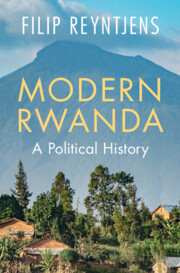Refine search
Actions for selected content:
124 results
Welfarism and continuity in ethical theory: a formal comparison of prospect utilitarianism vs. sufficientarianism
-
- Journal:
- Economics & Philosophy , First View
- Published online by Cambridge University Press:
- 09 October 2025, pp. 1-31
-
- Article
-
- You have access
- Open access
- HTML
- Export citation
6 - Conclusion
-
- Book:
- The Colonial Way of War
- Published online:
- 04 September 2025
- Print publication:
- 21 August 2025, pp 306-314
-
- Chapter
- Export citation
Chapter 8 - Describing Abnormalities
- from Part II - Interpretation
-
- Book:
- How to Read an EEG
- Published online:
- 27 September 2025
- Print publication:
- 24 July 2025, pp 76-94
-
- Chapter
- Export citation
Chapter 5 - Toddlerhood
- from Part I - The Beginnings of Meaning
-
- Book:
- The Development and Organization of Meaning
- Published online:
- 11 June 2025
- Print publication:
- 26 June 2025, pp 50-64
-
- Chapter
- Export citation
Chapter 11 - Competence, Resilience, and the Fate of Early Experience
- from Part III - The Organized and Organizing Nature of Meaning
-
- Book:
- The Development and Organization of Meaning
- Published online:
- 11 June 2025
- Print publication:
- 26 June 2025, pp 143-154
-
- Chapter
- Export citation
Chapter 10 - The Role of Meaning in Intergenerational Transmission Effects
- from Part III - The Organized and Organizing Nature of Meaning
-
- Book:
- The Development and Organization of Meaning
- Published online:
- 11 June 2025
- Print publication:
- 26 June 2025, pp 128-142
-
- Chapter
- Export citation
Chapter 15 - Conclusion
- from Part V - Integration and Conclusion
-
- Book:
- The Development and Organization of Meaning
- Published online:
- 11 June 2025
- Print publication:
- 26 June 2025, pp 201-207
-
- Chapter
- Export citation
Chapter 9 - Meaning as the Currency of Development
- from Part III - The Organized and Organizing Nature of Meaning
-
- Book:
- The Development and Organization of Meaning
- Published online:
- 11 June 2025
- Print publication:
- 26 June 2025, pp 119-127
-
- Chapter
- Export citation
9 - Conclusion
- from Part III - Liberalisation and Welfare in a Multi-level Democracy
-
- Book:
- Making India Work
- Published online:
- 13 February 2025
- Print publication:
- 13 February 2025, pp 193-211
-
- Chapter
- Export citation
Chapter 2 - Marriage and Courtier Families
- from Part I - The People of the Household
-
- Book:
- Ladies-in-Waiting in Medieval England
- Published online:
- 02 January 2025
- Print publication:
- 09 January 2025, pp 81-116
-
- Chapter
- Export citation
3 - Continuity
-
- Book:
- Writing for the Reader's Brain
- Published online:
- 12 December 2024
- Print publication:
- 12 December 2024, pp 52-82
-
- Chapter
- Export citation
Conclusion
-
- Book:
- Modern Rwanda
- Published online:
- 14 November 2024
- Print publication:
- 21 November 2024, pp 184-193
-
- Chapter
- Export citation

Modern Rwanda
- A Political History
-
- Published online:
- 14 November 2024
- Print publication:
- 21 November 2024
Chapter 2 - Literary Change
-
-
- Book:
- The Cambridge Companion to Literature in a Digital Age
- Published online:
- 29 November 2024
- Print publication:
- 14 November 2024, pp 34-46
-
- Chapter
- Export citation
A NOTE ON CONTINUOUS FUNCTIONS ON METRIC SPACES
- Part of
-
- Journal:
- Bulletin of Symbolic Logic / Volume 30 / Issue 3 / September 2024
- Published online by Cambridge University Press:
- 21 January 2025, pp. 398-420
- Print publication:
- September 2024
-
- Article
-
- You have access
- Open access
- HTML
- Export citation
5 - Cross-Variety Comparisons
-
- Book:
- Heritage Languages
- Published online:
- 09 July 2024
- Print publication:
- 27 June 2024, pp 92-158
-
- Chapter
- Export citation
16 - Continuity and change
- from Part IV - Process in acquisition
-
- Book:
- First Language Acquisition
- Published online:
- 01 November 2024
- Print publication:
- 20 June 2024, pp 462-496
-
- Chapter
- Export citation
6 - The End of Darkness? Uncertainty and Revolution
-
- Book:
- Streetscapes of War and Revolution
- Published online:
- 30 May 2024
- Print publication:
- 06 June 2024, pp 253-291
-
- Chapter
-
- You have access
- Open access
- HTML
- Export citation
1 - From Foe to Friend
- from Part I - No Mere Incantation
-
- Book:
- Ruins to Riches
- Published online:
- 12 April 2024
- Print publication:
- 09 May 2024, pp 11-34
-
- Chapter
- Export citation
THE TEMPORAL CONTINUUM
- Part of
-
- Journal:
- The Review of Symbolic Logic / Volume 18 / Issue 2 / June 2025
- Published online by Cambridge University Press:
- 12 April 2024, pp. 420-438
- Print publication:
- June 2025
-
- Article
- Export citation
